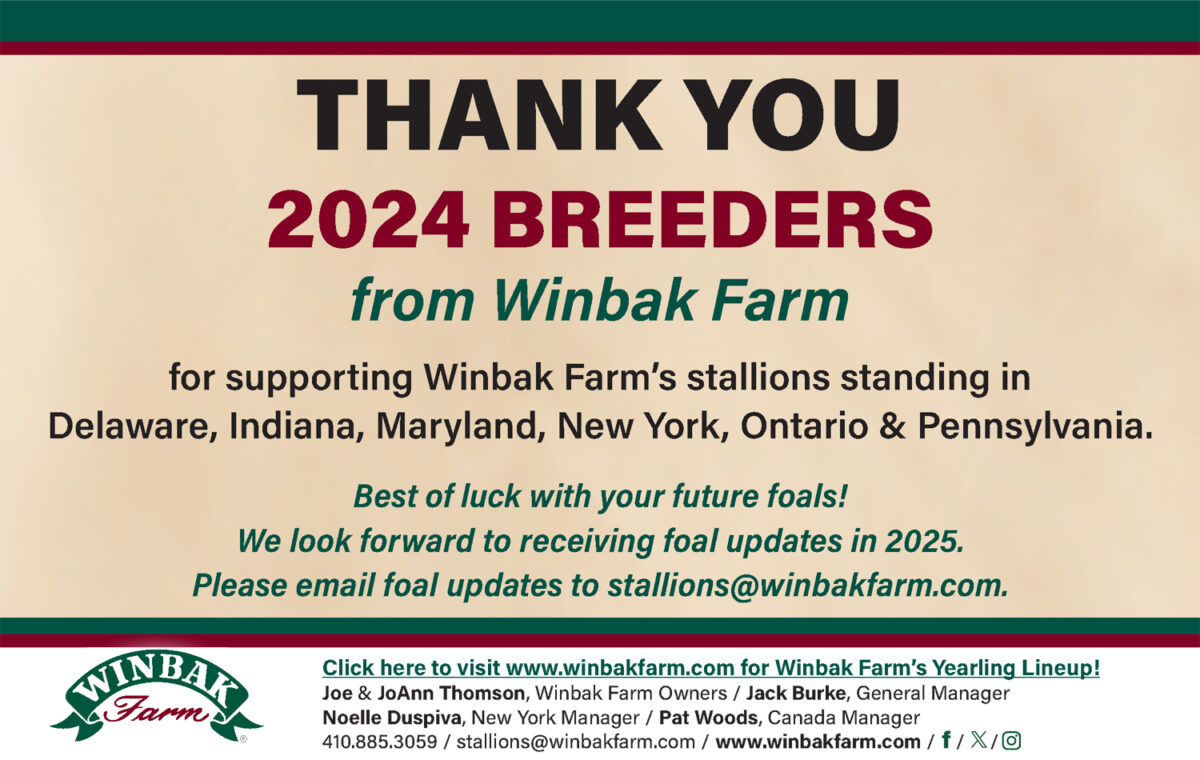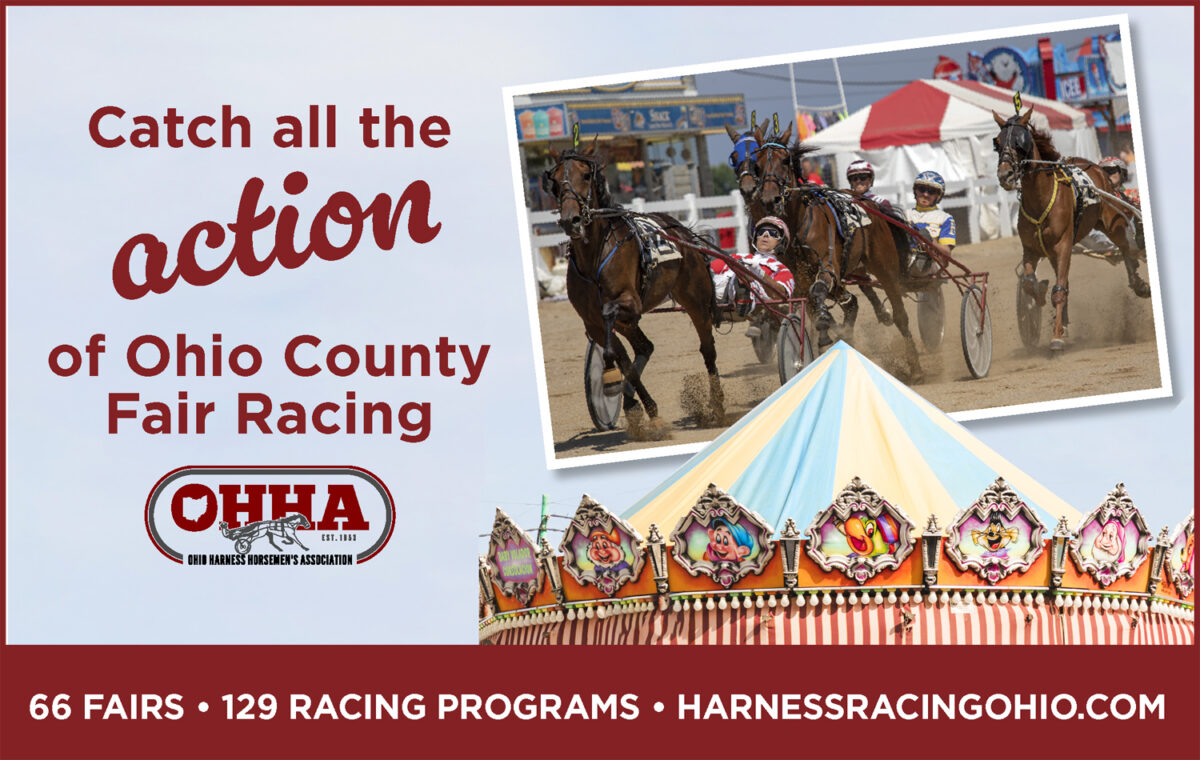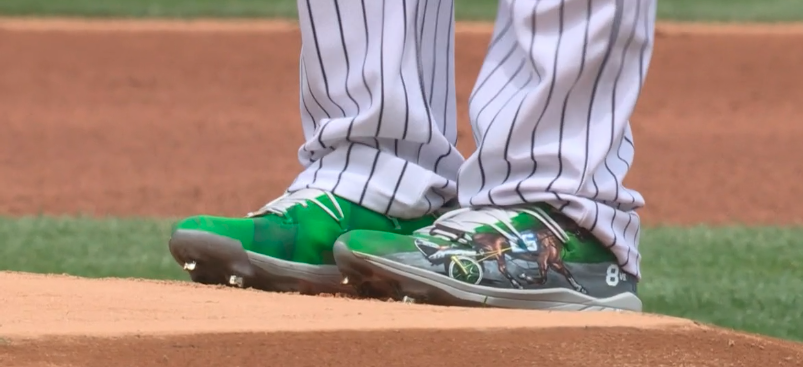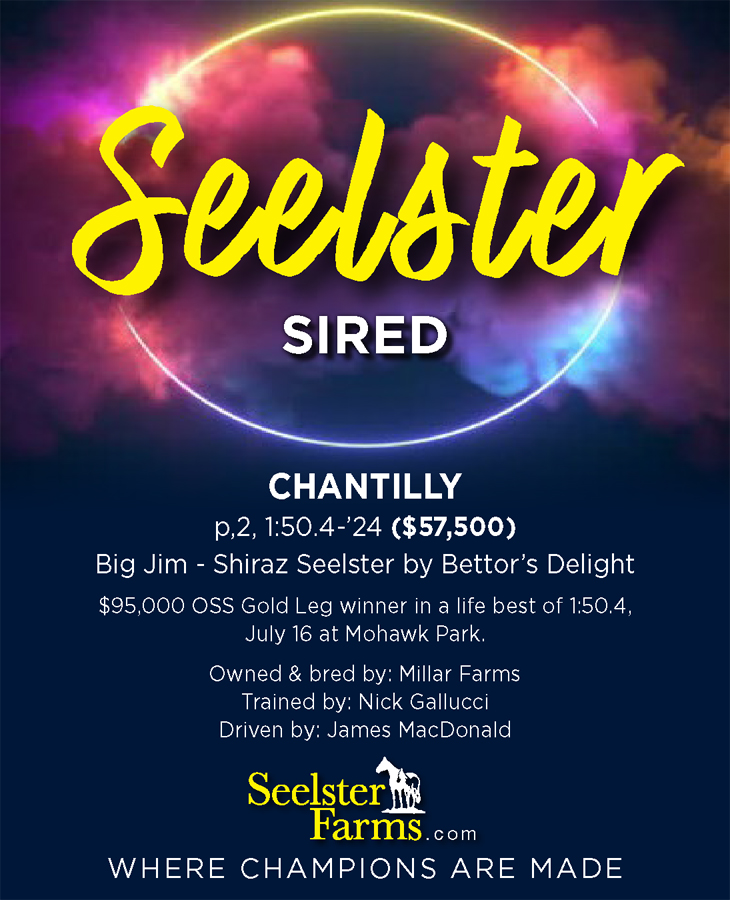

NESTOR CORTES makes a pitch for harness racing with a standardbred on his cleats
New York Yankees southpaw is a part-owner of pacer Tam Major A.
by Brett Sturman
Harness racing garnered some mainstream attention last weekend when New York Yankees starting pitcher Nestor Cortes donned cleats featuring artwork of a harness horse in action (photo is a screen grab from this video on yankees.com). And not just any harness horse, as was first covered in the Yankees Beat newsletter, a horse named Tam Major A. Cortes owns a piece of the $370,000-winning pacer that raced at The Meadowlands last Saturday (May 13), the same day Cortes started against the Rays at Yankee Stadium. Cortes received a no-decision that day in the Yankees’ 9-8 win and has since improved his record on the year to 4-2 with a solid win earlier this week against Toronto. He is the latest in a string of professional athletes to illustrate a direct interest towards harness racing.
Cortes grew up in close proximity to Florida thoroughbred racetracks Hialeah Park and Gulfstream Park and introduction into standardbreds is largely the result of his relationship with Joe Lee, who in addition to full-time work as a financial advisor, is an assistant equipment manager with the Yankees and is also recognized in harness racing circles as one of the more accomplished amateur drivers in the sport over the past few years. The idea of Cortes becoming involved in a horse with Lee is something that had been kicked around for a little while.
“ [Cortes] wanted to get involved last year and I just hadn’t claimed anything yet,” Lee said. “He always said to let him know though and maybe he’d take a piece. So, after the off-season and once spring rolled around, [trainer/co-owner] Buzzy Sholty and I claimed this horse Tam Major that had been racing well. And so, Nestor had been wearing a pair of custom cleats for each start this year. He has an artist that does the side of his cleats, and he had me send a picture of what a harness horse would look like on the track. The artist who makes them up then forwards them to Nestor at the stadium a couple of days later for his next start and that’s how that came to be.”
Following the Yankees’ win earlier that day, Cortes, along with teammate Jimmy Cordero and other friends, attended The Meadowlands in person to watch Tam Major race.
A $30,000 claim from April 22, Tam Major won his first start off the claim for his new connections on April 29 in a n/w $10,500 conditioned race. He worked his way up the class ladder maybe a bit too high as of May 13, though Tam Major lost only by four lengths in a n/w $20,000 race with Cortes taking in the races from one of The Meadowlands’ skyboxes.
Cortes isn’t the first Yankee in recent memory to have a brush with harness racing. Yankees general manager Brian Cashman, the son of harness racing Hall of Famer John Cashman, Jr., often comes to The Meadowlands to present the trophy for the John Cashman Memorial.
Though perhaps more ‘accidental,’ just last fall Yankees star and American League MVP Aaron Judge regularly sported a Siegelman Stable branded hat, which features a horse and sulky.
“When [Judge] started wearing that hat in the playoffs last October, he was wearing it for the design and brand,” said Lee, who added with a laugh, “But I was getting phone calls from all over the country when he was doing his post-game interviews asking if he was with the Siegelman Stable, if he had bought into some standardbreds; I even had Brian Cashman call and ask if he bought a horse with me. Judge was just wearing a brand at that time and there’s other guys wearing those hats around the clubhouse now, too. Harrison Bader, Judge, Giancarlo Stanton’s wearing one and they all get it now, Nestor shows everyone the races.”
Lee’s prominence as a driver in amateur harness races has been of interest within some Yankees clubhouse circles. The competitiveness of racing is something that’s highly relatable for professional athletes.
“A lot of the guys will ask me when I’m driving and there’s a good handful of them that always want to see replays of my races, so I think that’s turned them on a bit,” Lee said. “Driving in these races has sparked spurts of interest into what I’m doing and it’s translated into now where Nestor is involved, who loves it and maybe others down the road.”
Interestingly, whereas Lee and amateur races have acted as a catalyst in expanded involvement, amateur racing taking front and center stage at The Meadowlands has been an area of contention. To some, amateur races — and being carded to the extent that they are — is a drawback to pari-mutuel racing. In complete contrast, Lee wholeheartedly sees amateur racing as a proven positive for the sport.
“I absolutely believe that the amateur races have a place on the cards,” Lee said. “At this point they’ve been carded for quite a while for a number of years and it’s been well received by the overwhelming public. Week in and week out amateur races are some of the highest — if not the highest — bet races on The Meadowlands card. I would say about four or five weeks ago we had two amateur races on the Friday night card and both the exacta and trifecta pools handled north of $90,000. And there wasn’t a single race on that Friday or Saturday night where those pools even hit over $70,000. And with the struggle today for race secretaries to fill cards and have full fields, The Meadowlands is a premier place and one where you can still have 10 horses across the gate. Last week there were just five full fields out of a 14-race card and the amateurs supported three of them: that in itself allows for better handle.”
The main argument against amateur racing is that the betting product becomes too unpredictable, due to the inexperience of the drivers. But, as Lee notes, the fact that amateur racing consistently produces some of the highest handle races regardless of which track they race at, quells the argument that the races are too unpredictable to wager on. In fact, the style of racing produced by the amateurs is the total opposite of the boring, speed-favoring racing that those on the other side of the argument take issue with.
“I think years ago amateur racing was a bit different when it was more like a good old boys club, to be honest with you,” Lee said. “It was seen as a crash derby, whereas today there’s so much amateur racing in the Northeast and a lot of these guys like myself, Tony Verruso, are driving quite a few races. It’s just a different dynamic. There could be guys out there at 10-1 or 15-1 on the lead and then here comes a 4-5 favorite in the race and they’re not afraid to park a guy. They then get down to the half a little quick, they could tire in the stretch and then you’re setting it up for horses to come zooming by that wouldn’t have figured otherwise. The average win price in the amateurs is way higher than the win and exotic prices than the rest of the card. But then you’ll have others who don’t like it when every horse that wins is 2-5. You can’t have it both ways.
“But, I really do think it’s been well received. And nobody takes for granted that we’ll always be able to race each week but between Jeff Gural and Jason Settlemoir they’ve been gracious enough to let us do it. There’ve been a couple of incidents in our races, but there’ve been incidents in the regular races too. You obviously try to be as safe as you can out there and for the most part, I think the races have been pretty clean. It’s a bright spot for racing and it gets more people involved. It really helps the sport for sure.”
















